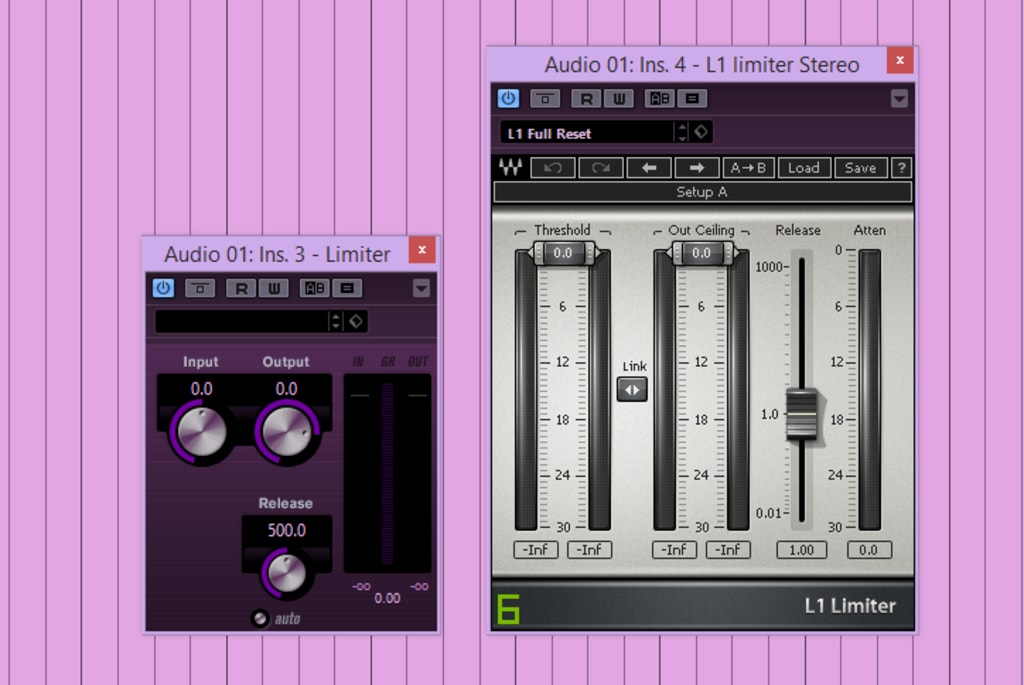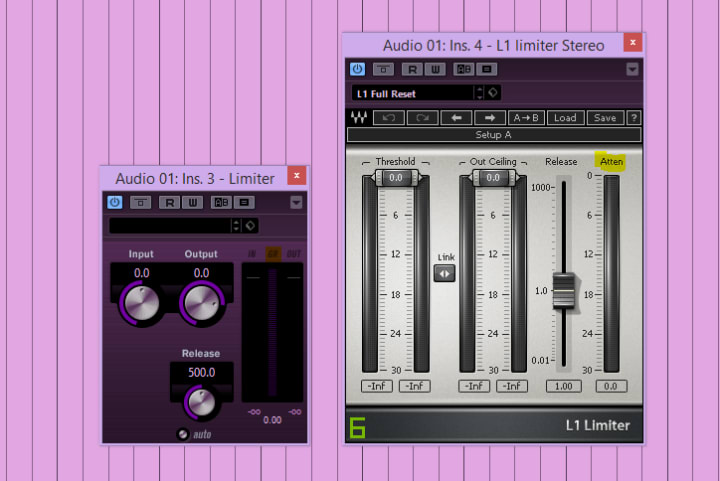Understanding Audio Limiting
Step by Step

In this series of articles, I am going to explain in depth the processes of several music production tools and effects, such as compression, EQ, limiting, reverb, delay, dithering and more.
I will try my best to explain in a way that is easily understood by music producers of all stages, this article will cover limiting.
What is a Limiter?
If you want to understand limiting it's a good idea to wrap your head around compression first, check out my article on compression here if you haven't already. The link opens in a new window.
A limiter is a form of compressor with the main function of limiting the level of the audio signal to a threshold you decide. A limiter is very commonly used in the mastering process as a final squeeze on the loudness to get as close to 0 as possible without causing clipping. A limiter is different from a normal compressor in the way it behaves with the compression parameters. The compressor reduces the signal level smoother and will still let some of the signal pass above the threshold, but a limiter will completely prevent any gain from passing through. Let's delve deeper.

Above are two different limiters. The first one is "Limiter" that comes with Steinberg's Cubase and the other one is Waves "L1 Limiter."
A limiter is a very common tool used in the mastering process to gain the overall signal level of your tracks in a controlled way to measure up with the industry standard, which is as close to 0 as possible.
The "Output" or "Out Ceiling" highlighted in yellow is where you decide the loudest point the levels are allowed to reach. On a normal compressor you would have the option here to adjust the ratio to how much signal will be allowed to pass over this point, but on a limiter the threshold is final. This means that no signal will be able to pass over your set threshold and will be "blocked out." Because you don't have the option to adjust the ratio (soft knee/hard knee, explained in compression article), a limiter needs to be used with caution so it doesn't limit the signal too hard. If the limiter is working too hard, you will be able to hear a drastic and unnatural sounding loudness decrease when the limiter sets in. What can also happen is that the signal is lowered (limited), so the loudness drops, followed by a drastic loudness increase when the signal drops below the threshold only to be limited again causing an undesirable and uneven "pumping" sound.

The release function works just like on a normal compressor. This is the tool that controls how quickly to release the signal and allow it to go back to it's original level after limiting. A release time that is too quick might cause an audible loudness increase after the limiting and a release time that is too long won't allow the signal to climb back to its original point before it's limited again by the next peak.

GR (Gain Reduction) on "Limiter" and Atten on L1 Limiter highlighted in yellow is where you see how much your signal is reduced. If I now turn the Input wheel or the threshold fader down, the overall gain of my track will increase until the threshold is reached, displayed below in the example.

In this example we can see that the output ceiling is set to -0.4. The input gain is increased leading to the signal eventually passing over the threshold and being limited as a result. The GR meter is showing that the signal is being limited with -3.01 dB. 3dB is not extreme and the gain reduction will be inaudible for most unaware people, but I would be careful pressing the levels any further up risking a more drastic and audible gain reducion.

In the example above I turned the input up even more and now the GR meter is showing a -5.94 dB decrease. This is definitely audible and I'd turn it down a bit again. If you are experiencing high GR without reaching a desirable overall signal level, you might want to revisit the mix and find out what elements are causing the loudness peaks and compress them separately before limiting. Then you should be able to lift the levels some more in the final limiting stage.
I hope this article was helpful and understandable. If there is a topic you would like me to visit and write about, please let me know!






Comments
There are no comments for this story
Be the first to respond and start the conversation.